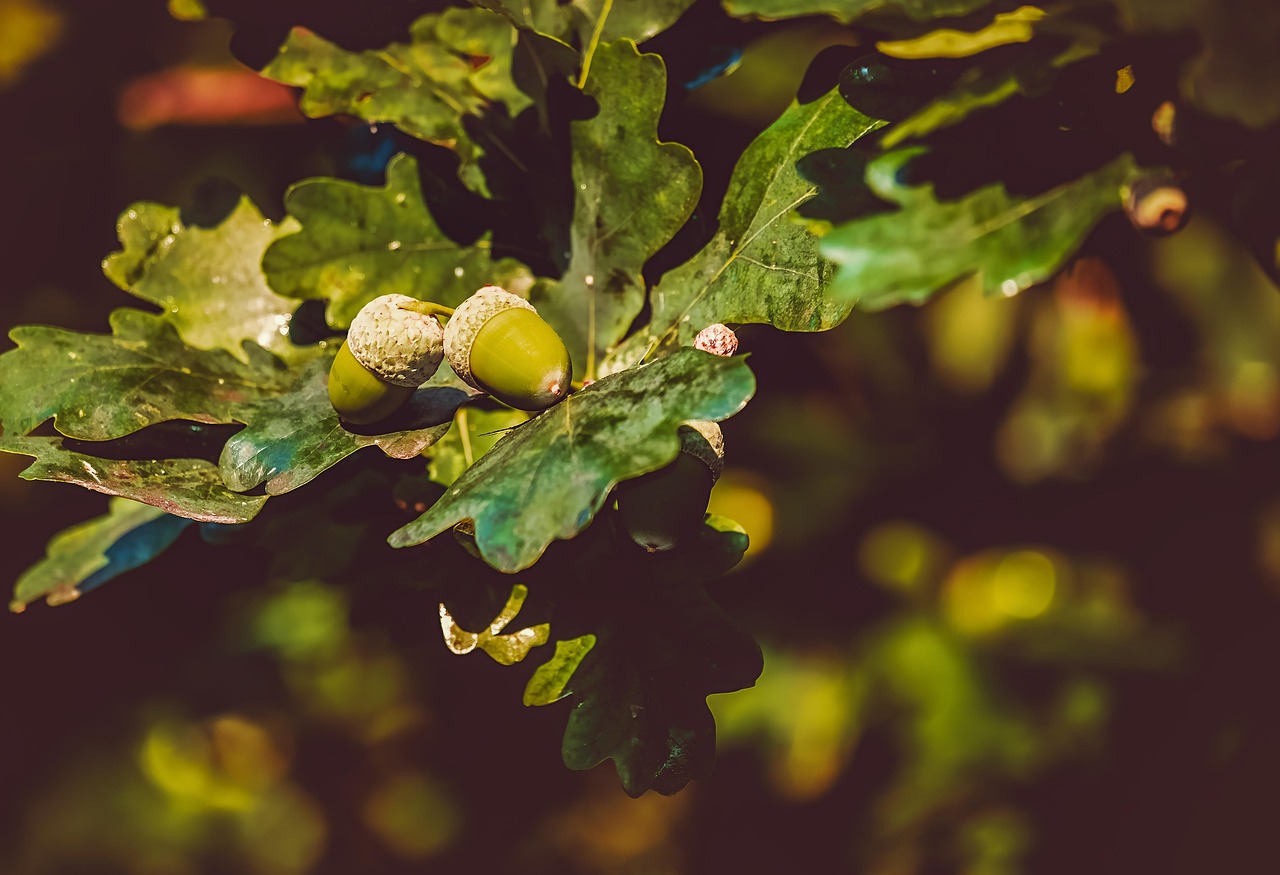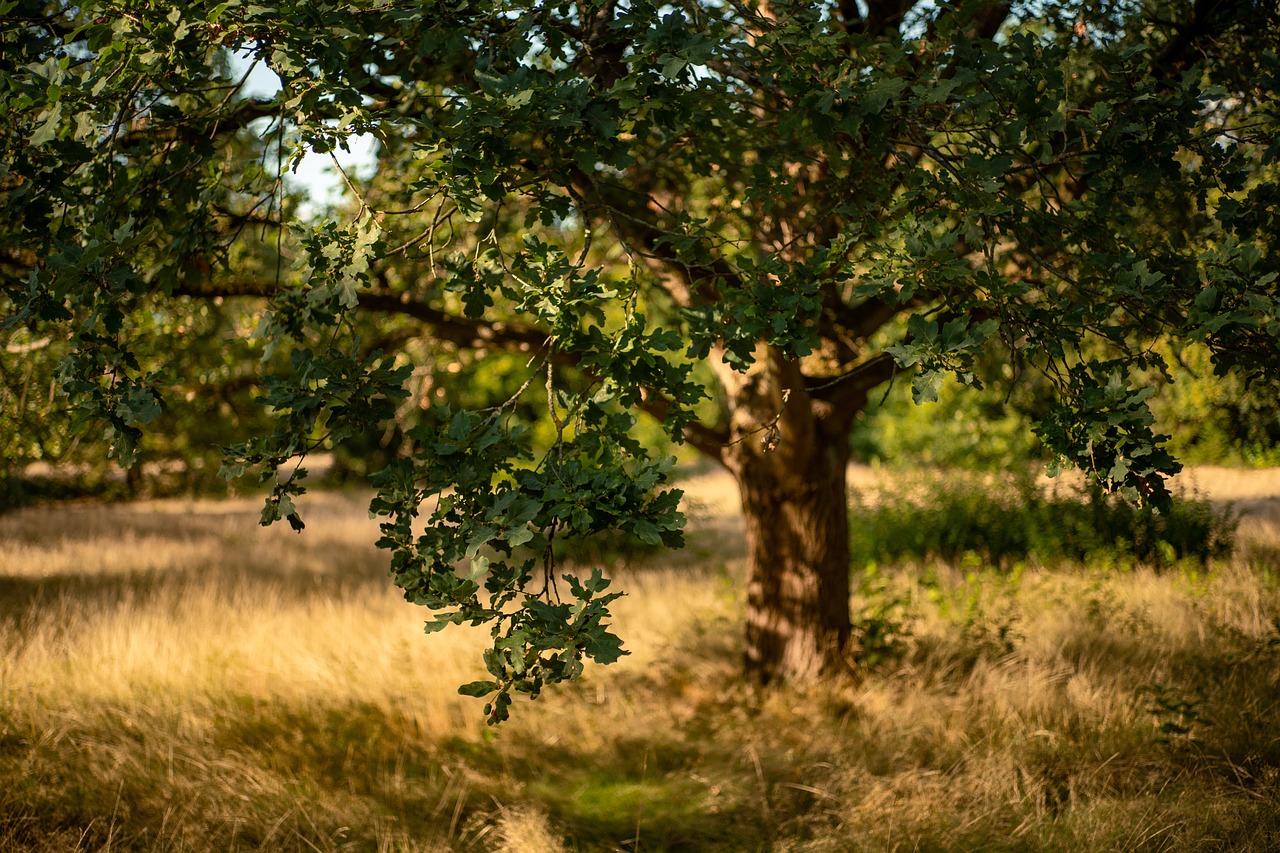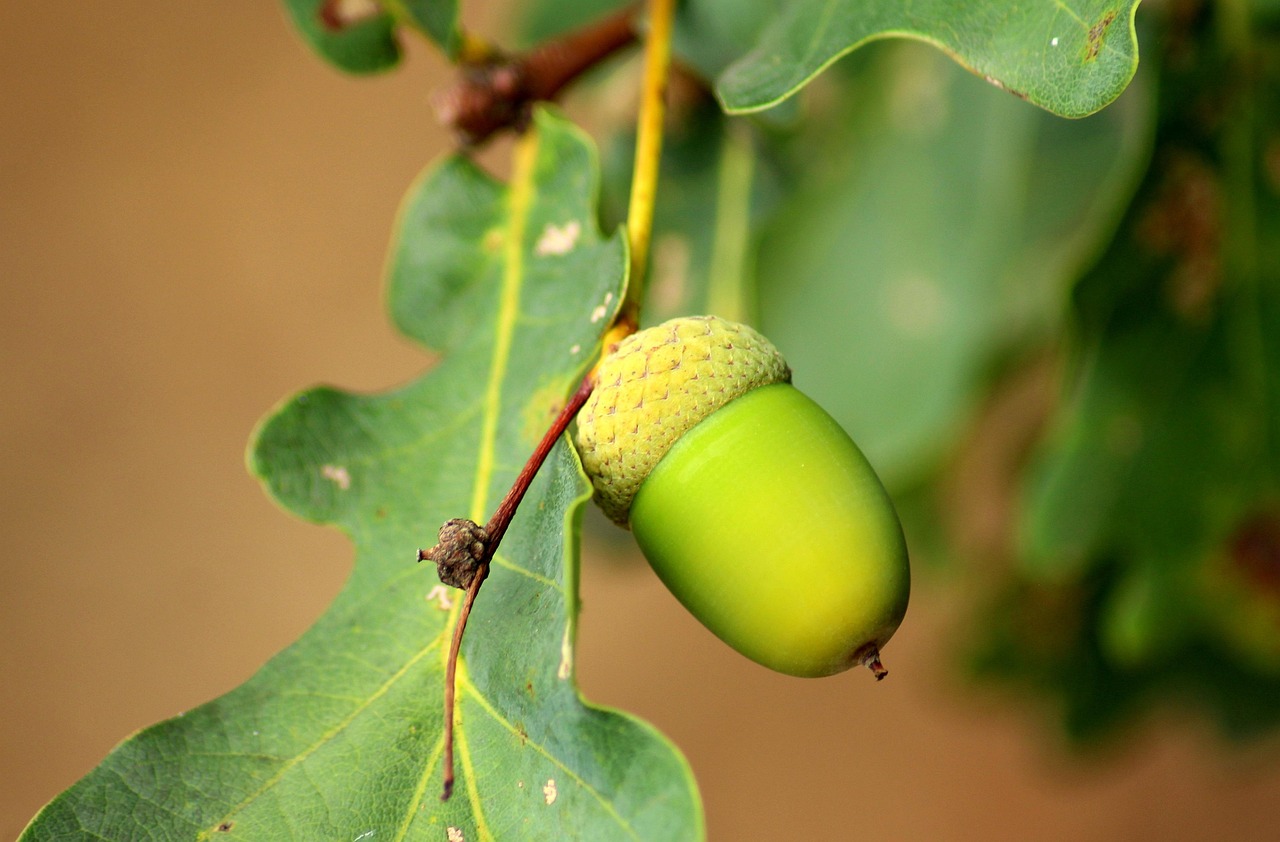Oak trees typically grow at a rate of 1 to 2 feet per year during their early years. Their growth rate can vary based on species, environmental conditions, and care. Over their lifetime, they can reach heights of 60 to 100 feet or more, depending on the variety.
Understanding Oak Tree Growth
Oak trees are among the most majestic trees in North America. They are not only valued for their sturdy wood and stunning fall foliage but also for their ecological importance. Oak trees provide habitat and food for various wildlife species. Understanding the growth rates of oak trees is essential for anyone looking to plant or maintain these beautiful giants.

Growth rates can vary significantly among different oak species. Factors such as soil quality, water availability, sunlight exposure, and overall climate play a crucial role in determining how fast an oak tree will grow. In general, younger oak trees tend to have a faster growth rate compared to older ones. This section will delve into the annual and lifetime growth trends of oak trees.
Annual Growth Rates
The annual growth rate of an oak tree can be influenced by several factors. Typically, young oaks experience rapid growth during their initial years. As they mature, their growth rate may slow down. The following are some key points regarding annual growth rates:
- Young oak trees (1-5 years): 1 to 2 feet per year
- Mature oak trees (6-20 years): 1 to 3 feet per year
- Fully grown oak trees (20+ years): growth may slow to less than 1 foot per year
When it comes to specific species of oak, the growth rates can differ. For instance, the Northern Red Oak is known for its relatively fast growth compared to other species like the White Oak.

Factors Affecting Growth Rates
Several environmental and biological factors affect the growth rates of oak trees. Understanding these factors can help in fostering healthy tree growth. The major influences include:
- Soil Quality: Well-drained, nutrient-rich soil promotes better growth.
- Water Availability: Consistent watering, especially during dry spells, encourages faster growth.
- Sunlight: Oak trees thrive in full sun; shaded areas can stunt their growth.
- Competition: Neighboring plants may compete for resources, impacting growth.
Lifetime Growth Trends
Over their lifetime, oak trees can achieve impressive heights and widths. The lifespan of an oak tree typically ranges from 100 to 300 years, with some species living even longer. During this time, the growth trends can be categorized as follows:
| Species | Average Height (Feet) | Average Width (Feet) | Lifespan (Years) |
|---|---|---|---|
| Northern Red Oak | 60-75 | 45-60 | 200-300 |
| White Oak | 60-100 | 50-80 | 200-300+ |
| Pin Oak | 50-70 | 30-40 | 100-150 |
The information provided in this table highlights the impressive size and longevity of various oak species. Understanding these trends is essential for landscape planning and forest management.

Caring for oak trees involves regular maintenance such as pruning and monitoring for pests. Proper care can significantly influence both annual and lifetime growth rates. Factors such as weather patterns and soil conditions will also affect how well an oak tree grows over the years.
Species-Specific Growth Characteristics
Different species of oak trees exhibit unique growth characteristics. Understanding these differences can help in selecting the right species for specific locations and purposes. Here, we will explore some of the most common oak species and their growth tendencies.
Northern Red Oak
The Northern Red Oak is one of the fastest-growing oak species. Known for its striking fall color, it thrives in a variety of soil types but prefers well-drained, sandy soils. This species typically reaches a height of 60 to 75 feet and can grow up to 3 feet per year during its early years.

- Growth Rate: 2 to 3 feet per year in ideal conditions.
- Height: 60-75 feet.
- Lifespan: 200-300 years.
White Oak
The White Oak is renowned for its strong wood and longevity. It grows more slowly compared to the Northern Red Oak but can reach impressive heights of up to 100 feet. The growth rate may be around 1 to 2 feet per year, making it a long-term investment for homeowners and landscapers alike.
- Growth Rate: 1 to 2 feet per year.
- Height: 60-100 feet.
- Lifespan: 200-300+ years.
Pin Oak
The Pin Oak is another widely planted species. It is known for its distinctive pyramidal shape and vibrant fall foliage. This tree typically grows at a rate of 1 to 2 feet per year, reaching heights of about 50 to 70 feet.
- Growth Rate: 1 to 2 feet per year.
- Height: 50-70 feet.
- Lifespan: 100-150 years.
Environmental Impact on Growth Rates
The environment plays a significant role in determining how well oak trees grow. Various environmental factors can either enhance or hinder growth. Here are some key elements that influence oak tree growth:
- Climate: Oak trees prefer temperate climates with adequate rainfall. Extreme temperatures and drought conditions can stunt growth.
- Soil Type: Well-drained soils rich in organic matter are ideal for oak trees. Heavy clay soils can lead to root rot and other issues.
- Pests and Diseases: Oak trees are susceptible to pests such as the oak wilt fungus and gypsy moths. Monitoring and managing these threats is essential for healthy growth.
- Sunlight Exposure: Full sun is optimal for oak trees. Insufficient sunlight can lead to poor growth and increased vulnerability to diseases.
Growth Monitoring Techniques
To ensure successful growth of oak trees, monitoring their development is crucial. Several techniques can help track their growth effectively:
1. Measuring Height and Diameter
Regularly measuring the height and diameter of the trunk can provide valuable data on growth rates. Using a tape measure, these measurements should be taken at the same point each time for accuracy.
2. Observing Leaf Health
The health of leaves can indicate overall tree well-being. Look for signs of discoloration, wilting, or pest damage. Healthy leaves are typically a vibrant green and exhibit good growth patterns.
3. Soil Testing
Conducting soil tests can reveal nutrient levels and pH balance. Adjusting soil conditions can significantly impact growth rates. Testing should be done every few years to monitor changes.
Caring for Oak Trees for Optimal Growth
Caring for oak trees involves several practices that promote healthy growth throughout their lifespan. Here are some key care tips:
- Watering: During dry spells, make sure the trees receive adequate water, especially when they are young.
- Mulching: Applying mulch around the base of the tree helps retain moisture and suppress weeds.
- Pruning: Regular pruning helps maintain structure and encourages healthy growth. Remove dead or diseased branches promptly.
- Pest Management: Regularly inspect the trees for signs of pests or diseases, and take appropriate action if necessary.
By understanding the specific needs of different oak species and monitoring their growth closely, you can ensure that these magnificent trees thrive in your landscape for generations to come.
Common Diseases and Pests Affecting Oak Trees
Like all trees, oak trees are susceptible to various diseases and pests that can impact their health and growth rates. Identifying these threats early is crucial for effective management. Below are some of the most common diseases and pests that can affect oak trees.
Diseases
Several diseases can hinder the growth of oak trees. Awareness of these conditions can lead to prompt intervention. Here are some notable oak tree diseases:
- Oak Wilt: A fungal disease that affects the vascular system of oak trees, leading to wilting, leaf discoloration, and ultimately death. It spreads quickly through root grafts and insect vectors.
- Anthracnose: This fungal disease causes leaf spots, blight, and premature leaf drop. It is most prevalent in cool, wet spring weather.
- Powdery Mildew: A fungal infection characterized by a white powdery substance on leaves. While it typically does not kill the tree, it can weaken it over time.
- Sudden Oak Death: Caused by a pathogen that can lead to high mortality rates in oak populations. Symptoms include bleeding from the trunk and leaf wilting.
Pests
Pests can cause significant damage to oak trees by feeding on leaves, bark, or roots. Some common pests include:
- Gypsy Moth: This invasive species defoliates oak trees, leading to weakened trees and increased susceptibility to disease.
- Oak Bark Beetle: These beetles bore into the bark, disrupting the tree’s nutrient flow and potentially leading to tree death.
- Spider Mites: Small pests that suck sap from leaves, causing yellowing and stippling. Heavy infestations can lead to leaf drop.
- Scale Insects: These pests attach themselves to branches and stems, feeding on sap and weakening the tree over time.
Preventative Measures for Oak Tree Health
Taking preventative measures can significantly reduce the risk of diseases and pest infestations in oak trees. Here are some effective strategies:
- Regular Inspections: Conduct routine checks for signs of disease or pest activity. Early detection is key in managing issues effectively.
- Maintaining Tree Health: Healthy trees are less susceptible to diseases and pests. Ensure proper watering, mulching, and pruning practices.
- Avoiding Overcrowding: Ensure adequate spacing between trees to promote airflow and reduce humidity, which can foster disease.
- Using Resistant Varieties: Whenever possible, select oak species that are known for their resistance to certain diseases and pests.
The Role of Oak Trees in Ecosystems
Oak trees play a vital role in their ecosystems. They provide numerous benefits that extend beyond their immediate environment. Understanding these roles can enhance appreciation for planting and maintaining oak trees.
Biodiversity Support
Oak trees are keystone species in many forests. Their large canopies provide habitat for various birds and mammals. Additionally, they support an extensive array of insects, fungi, and other organisms.
- Nesting Sites: Many bird species use oak trees for nesting, benefiting from the tree’s sturdy branches.
- Food Source: Acorns produced by oak trees serve as a critical food source for wildlife such as squirrels, deer, and various birds.
- Fungi Relationships: Oaks form symbiotic relationships with fungi in the soil, which help improve nutrient uptake.
Erosion Control
The deep root systems of oak trees help stabilize soil and prevent erosion. This is especially important in areas prone to heavy rainfall or on slopes where soil can easily wash away.
Aesthetic and Cultural Value
Beyond their ecological importance, oak trees also hold significant aesthetic value in landscapes and cultural heritage. They are often seen as symbols of strength and endurance.
- Landscaping: Their grandeur makes them popular choices in parks, yards, and public spaces.
- Cultural Significance: Many cultures have revered oak trees throughout history, often associated with strength and longevity.
The intrinsic value of oak trees extends beyond their growth rates. By understanding their roles in ecosystems and taking steps to protect them from diseases and pests, we can ensure their continued presence in our environments for future generations.
Future Trends in Oak Tree Growth and Conservation
As climate change and urban development continue to impact natural ecosystems, the future of oak trees is uncertain. Understanding potential trends in oak tree growth and conservation efforts is essential for their survival. Here are some important considerations:
Climate Adaptability
Oak trees have demonstrated resilience to various climatic conditions. However, as temperatures rise and precipitation patterns shift, certain species may struggle to adapt. Tree planting initiatives should focus on selecting species that can thrive in changing conditions. This may include:
- Native Species: Prioritizing native oak species that are adapted to local conditions will enhance the success rate of planting initiatives.
- Drought-Resistant Varieties: Considering species that can withstand periods of low rainfall will be increasingly important in drought-prone areas.
Urban Forestry Initiatives
Urban areas often lack adequate green spaces, making the incorporation of oak trees critical for environmental health. Urban forestry programs can provide numerous benefits, including:
- Air Quality Improvement: Trees filter pollutants, improving urban air quality.
- Temperature Regulation: Shade from oak trees can help moderate temperatures, reducing the urban heat island effect.
- Stormwater Management: Tree canopies reduce runoff and improve groundwater recharge.
Community Engagement and Education
Engaging communities in the care and preservation of oak trees can foster a sense of responsibility and stewardship. Educational programs can highlight the importance of oak trees and ways to protect them. Effective strategies include:
- Workshops: Organizing workshops on tree care, pest management, and the ecological benefits of oak trees.
- Volunteer Programs: Encouraging community members to participate in tree planting and maintenance activities.
- School Programs: Incorporating oak tree education into school curricula to raise awareness among younger generations.
Final Thoughts
The growth rates and health of oak trees are influenced by a myriad of factors, including species selection, environmental conditions, and community involvement. By understanding these aspects, we can better appreciate the vital role oak trees play in our ecosystems and landscapes.
Protecting and nurturing oak trees is not just a matter of preserving a single species; it is about maintaining biodiversity and ensuring that future generations can enjoy their beauty and benefits. As stewards of the land, we have the responsibility to implement effective conservation strategies, promote community engagement, and educate ourselves about the importance of these magnificent trees.
In conclusion, oak trees provide significant ecological, aesthetic, and cultural value. Their growth rates may vary, but with proper care, monitoring, and understanding of their needs, we can ensure that these iconic trees continue to thrive in our environments for years to come. As we move forward, it is essential to remain vigilant against threats such as pests and diseases while fostering a deeper connection with nature through oak tree conservation.
